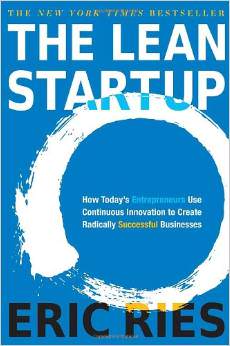Lean Startups and the Art of the Pivot
The popular view of a real entrepreneur is someone with a big vision, and a stubborn determination to charge straight ahead through any obstacle and make it happen. The vision part is fine, but successful entrepreneurs have found that the extreme uncertainty of a new product or service usually requires many course corrections, or “pivots” to find a successful formula.
This reality has fostered a popular new startup approach which dramatically improves the efficiency and speed of these corrections, pioneered by Silicon Valley entrepreneur and author Eric Ries. His new book on this subject, “The Lean Startup,” lays out how today’s entrepreneurs use continuous innovation to create radically successful businesses.
Eric espouses designing products with the smallest set of features to please a customer base, and moving products into the marketplace quickly to test reaction, then iterating. He does a great job in the book of making the case for management systems, rather than gut-level reactions, to make required course corrections (pivots), to dramatically improve the odds for success.
Pivots come in many different flavors, each designed to test the viability of a different hypothesis about the product, business model, and engine of growth. I agree with Eric’s summary of the top ten types of pivots to consider:
- Zoom-in pivot. In this case, what previously was considered a single feature in a product becomes the whole product. This highlights the value of “focus” and “minimum viable product” (MVP), delivered quickly and efficiently.
- Zoom-out pivot. In the reverse situation, sometimes a single feature is insufficient to support a customer set. In this type of pivot, what was considered the whole product becomes a single feature of a much larger product.
- Customer segment pivot. Your product may attract real customers, but not the ones in the original vision. In other words, it solves a real problem, but needs to be positioned for a more appreciative segment, and optimized for that segment.
- Customer need pivot. Early customer feedback indicates that the problem solved is not very important, or money isn’t available to buy. This requires repositioning, or a completely new product, to find a problem worth solving.
- Platform pivot. This refers to a change from an application to a platform, or vice versa. Many founders envision their solution as a platform for future products, but don’t have a single killer application just yet. Most customers buy solutions, not platforms.
- Business architecture pivot. Geoffrey Moore, many years ago, observed that there are two major business architectures: high margin, low volume (complex systems model), or low margin, high volume (volume operations model). You can’t do both at the same time.
- Value capture pivot. This refers to the monetization or revenue model. Changes to the way a startup captures value can have far-reaching consequences for business, product, and marketing strategies. The “free” model doesn’t capture much value.
- Engine of growth pivot. Most startups these days use one of three primary growth engines: the viral, sticky, and paid growth models. Picking the right model can dramatically affect the speed and profitability of growth.
- Channel pivot. In sales terminology, the mechanism by which a company delivers it product to customers is called the sales channel or distribution channel. Channel pivots usually require unique pricing, feature, and competitive positioning adjustments.
- Technology pivot. Sometimes a startup discovers a way to achieve the same solution by using a completely different technology. This is most relevant if the new technology can provide superior price and/or performance to improve competitive posture.
Every entrepreneur faces the challenge in developing a product of deciding when to pivot and when to persevere. Ask most entrepreneurs who have decided to pivot and they will tell you that they wish they had made the decision sooner. In fact, a startup’s runway is really not money, but the number of pivots they can still make. What are you doing to get to the required pivots faster?

